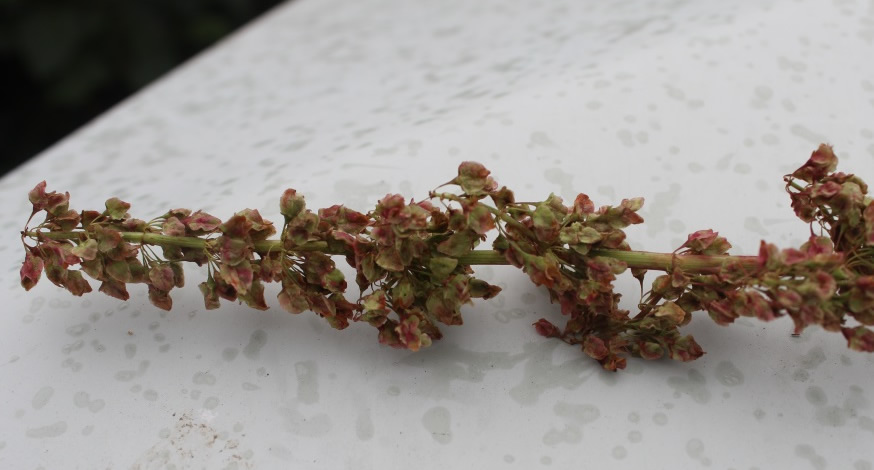Sourdock Wild Rhubarb

Botanical Name: Rumex fenestratus
Common Name: Wild Rhubarb
Other Names: Aluungis (feona’s translation: quunarliq (sour)
Found in: found in wet, sheltered places
Physical Characteristics: The lower leaves of Rumex have a long petiole and are cordate at the base. The stem is erect, stout and grows from a central taproot. Dock can reach heights from six inches to two feet high.
Nutritional Value: The leaves are high in vitamin A and C, the leaves also contain Oxalic acid, a phytochemical found rhubarb, is believed to be successful in fighting several kinds of tumor cells, it is also a detoxifying agent, helping your liver cleanse your blood. The seeds from the stalk can be eaten as an iron supplement.
Parts of the plant used: Leaves, stocks and seeds.
When plant should be gathered: May - July
Plant applications: food, decoction/infusion
Reported Benefits: Food, Constipation, General ill health.
Preparation/Processing: Food: People would make pies from sour dock stems. Leaves can be used much like spinach and as a dessert.
Constipation and General ill health: A decoction/infusion of this plant was prepared and drunk for constipation (Birket-Smith 1953) and general ill health (Russell 1991). The leaves of Rumex were also eaten to “purge the system and clean the blood (graham 1985).
General Ill Health: Crushed and brewed, the stems were used as a substance that causes vomiting, and sometimes as a sedative, to help calm or soothe a person. (Pierce 1978)
